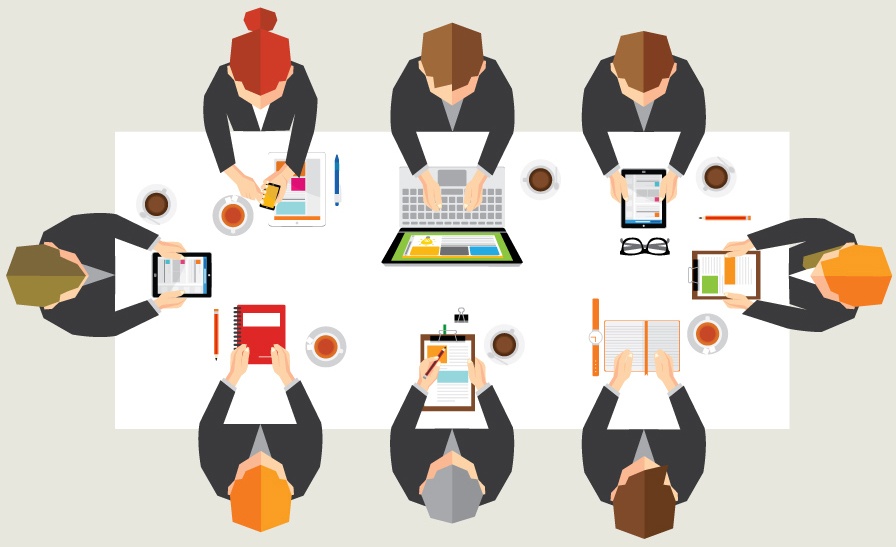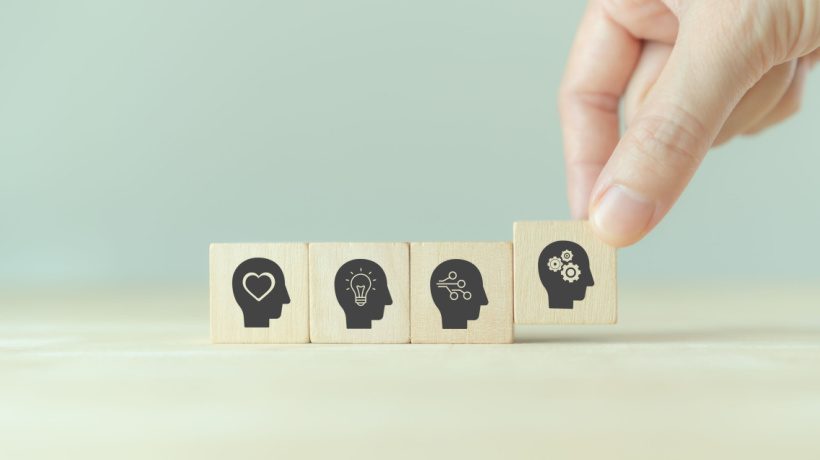Personalization Is The Future: How To Design Personalized Learning Experiences
Personalization represents a move away from the one-size-fits-all training strategy. New technologies and platforms enable learning to be very customized and accessible anywhere, any time.
Let's look at 3 personalization trends:
1. Adaptive learning tools can help you understand the individual needs of your learners.
Your learners are used to personalized experiences when they buy products. For example, when you visit Amazon.com you’ll see a section that offers suggestions based on what other customers have viewed or bought.
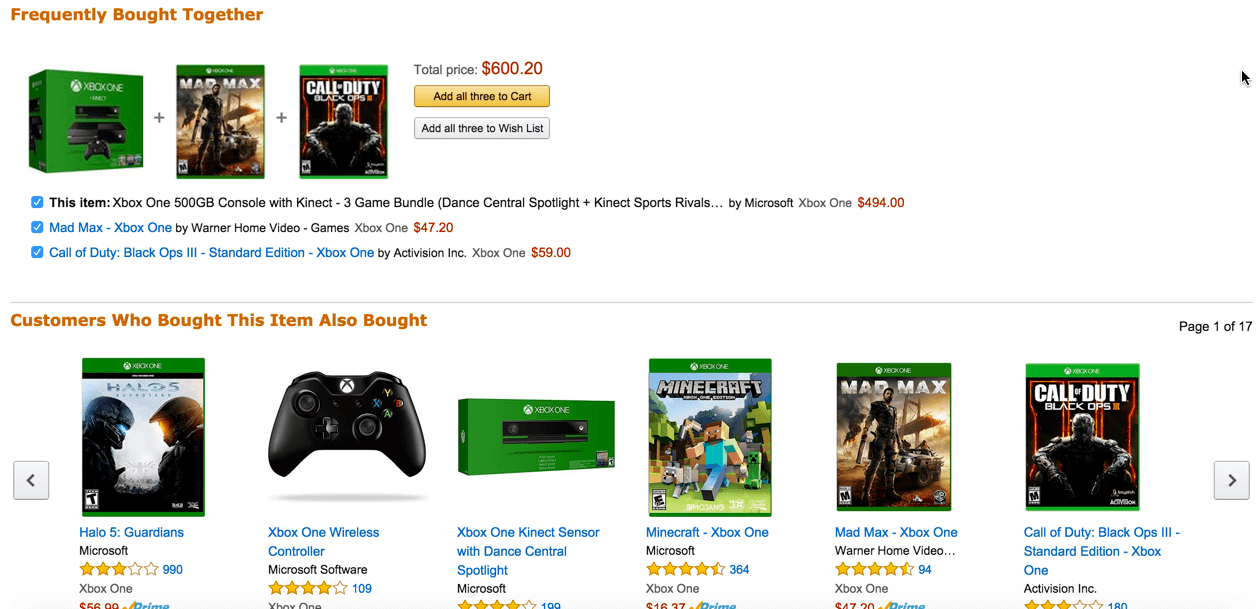
Adaptive learning is similar to this example, but instead of recommending products, it presents learners with personalized content based on their progress in the eLearning program.
Learning managers, Instructional Designers, and content authors now need to respond quickly to the needs of the organization and its learners. Learning Management Systems (LMSs) and authoring tools are assisting with this new challenge, offering analytics to help learning teams better understand how their learners are progressing through their content.
Here’s a quick look at the analytics inside Elucidat's authoring tool:

Analytics like this help you identify what parts of your courses are being viewed and completed. You can use this intelligence to improve the experience for your learners. For example, if some content is being skipped over you can rethink how you communicate that section of the course. You might need to make it shorter –or chunk it up– so that it’s easier for learners to digest.
Modern learners need a personalized experience. You can no longer stick with the mantra of one size fits all. Tools like Elucidat make delivering adaptive eLearning fast and simple.
2. Experience API captures additional learner insights outside the Learning Management System.
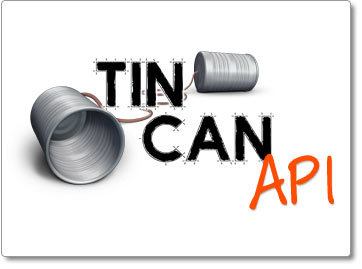
Your eLearning is probably only one part of a blend that combines face-to-face sessions, on-the-job training, coaching, and other learning interactions.
If your organization conforms to the 70:20:10 model, then most of the learning takes place like this:
- 70% from on-the-job experience.
- 20% from feedback and working with other colleagues.
- 10% from training courses.
How are you tracking this multi-channel experience?
Your Learning Management System may be able to track 10% of the learning, but how do you track performance of on-the-job experience and feedback from others?
Finding ways to create record stores of individuals’ learning experiences from multiple sources can help you leverage the 90% learning that’s taking place in the tacit or informal channels.
Elucidat uses SCORM to track learner progress, but it doesn’t capture the 90% of learning that goes on outside the Learning Management System. Experience API (Tin Can), also known as xAPI, can help you define a more personalized approach to managing learning. xAPI can record learning from mobile devices and content not delivered via Learning Management System. It allows you to track, capture, share, and analyze learning across different devices.
eLearning authoring tools that utilize xAPI can help you capture learning experiences that are currently invisible. The data that Tin Can API collects will give you greater insights into how relevant and useful your content is to learners.

3. Augmented learning is where virtual reality meets adaptive learning.
Imagine learning environments not constrained in a training room that can adapt in real time to learners’ inputs or needs. Augmented learning is where virtual reality meets adaptive learning. Developments in technology and devices such as the virtual reality headset, Oculus Rift, have big potential for making learning more personalized. A very simple demonstration of the use of such technology is BMW’s vision for training service personnel using augmented learning.
How To Design Personalized Learning Experiences
You don’t need an Oculus Rift headset to design personalized learning experiences. Learning can be personalized in a number of simple ways. For example, you could offer a personalized certificate upon completion of a course.
Here are 5 ideas to help you design personalized learning paths:
- Create an ecosystem to support people in their jobs.
Job aids, just-in-time learning nuggets, and small chunks of learning or resources can provide additional support to learners on the job. - Create placement tests.
These will help start individual learners at the right point in the learning journey. Some learners may need to start at the beginning, whilst other may not. Some parts of a course may be relevant for all learners, whilst other areas may be relevant only to a few. - Build continuous assessments into programs.
This will help learners understand how they are progressing and whether they need to go back to review previous content. - Create dynamic menus.
Learners can use these menus to identify where they are in the course and quickly jump straight into parts offering the content they need to learn. - Build branching courses.
Use an authoring tool that enables you to create scenario questions that take learners to different parts of the course depending on how they respond. Here’s a screenshot of a scenario question inside a course built with Elucidat:
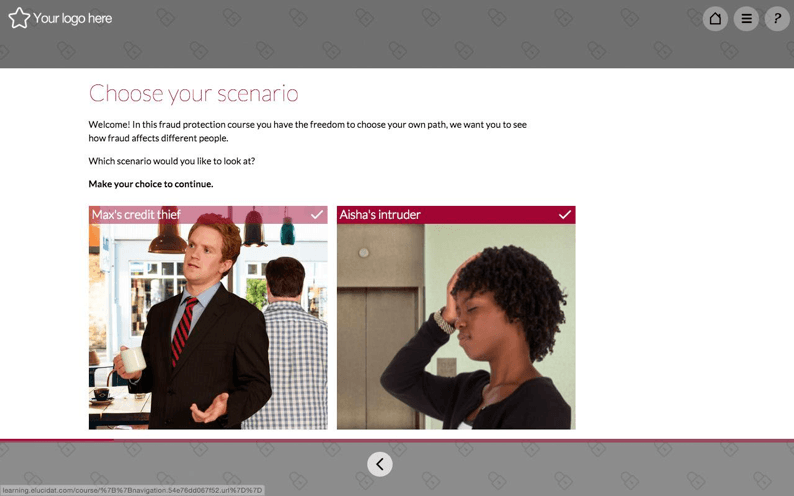
Final Takeaways
Remember that personalization is all about offering learners a personal choice. Not all learners are equal; many will have different needs, goals, and styles of learning.
Keep the following points in mind when you’re designing personalized learning:
- Learners have different goals.
- Frequent feedback is the best way to let learners know how they are doing.
- Regular assessments help learners understand what they don’t know and what they should focus on learning.
- Learners need continuous opportunities to consolidate their learning through on-the-job practice.
